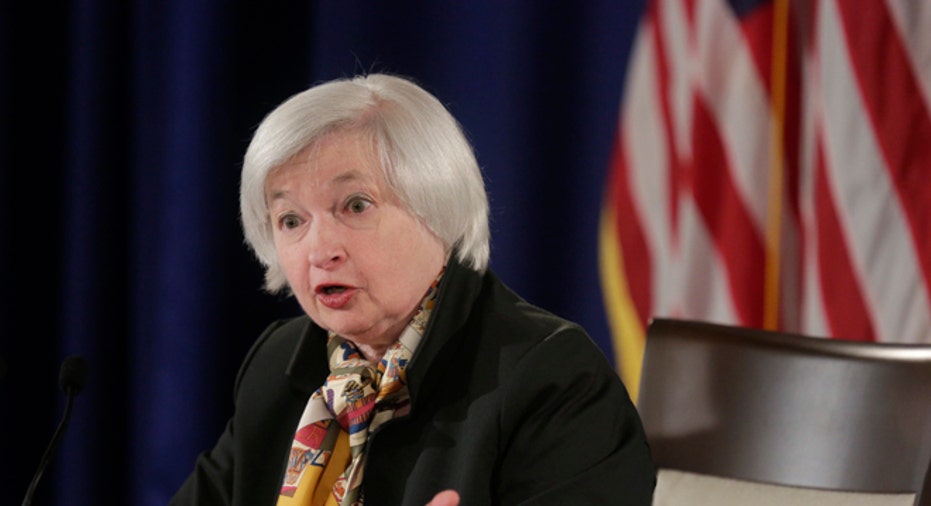The Fed: Impatience Won't Replace Patience

No one summed up the Federal Reserve’s current position better than Fed Chair Janet Yellen herself, who said rather succinctly Wednesday, “Just because we removed the word patient from our statement doesn’t mean we’re going to be impatient.”
Exactly.
Investors received that message loud and clear as they rallied U.S. stock markets following the release of the Fed’s latest policy statement at 2 p.m. EST. After spending much of the day in negative territory, stocks surged higher late in the session as Yellen reassured markets during a press conference that the Fed was still in no hurry to raise interest rates.
Despite the ostensibly dovish move of removing the word ‘patient’ from its statement, a shift in language that lifts one of the final barriers to the first rate hike in nearly a decade, Fed officials stressed that the decision making process remains flexible and that the timing for a rate liftoff will continue to be dependent on incoming data.
In other words, the word ‘patient’ may have been removed but the sentiment remains.
“Whether they use it or not, I think patience is still the word of the day,” said Scott Clemons, chief investment strategist at New York investment bank Brown Brothers Harriman. Given the “precarious state of the (global) economy” Fed policy makers can be expected to “think twice about being too precipitous about raising rates here in the U.S.,” said Clemons. While the Fed’s mandate is focused on the U.S. economy, U.S. central bankers are hardly impervious to the instability that has roiled markets in Europe and concerns for slowing growth in Asia.
“They read the newspapers,” Clemons said of Fed policy makers.
The reason they can remain patient as they continue to ponder the timing of a rate hike is because inflation remains well below the Fed’s 2% target rate, Clemons explained. If, however, inflation starts to shoot higher, lifted by a tightening job market, Clemons said the Fed retains the flexibility it needs to lift rates accordingly should prices start to surge.
For the time being, at least, the Fed can afford to remain patient even if they no longer use the word. “I think they’ve got the best of both worlds. They can afford to take their time,” Clemons said.
In the statement released following its two-day meeting, the Fed's policy-setting Federal Open Markets Committee repeated its often-stated position that the U.S. job market has improved significantly in recent months.
The statement left a June rate increase as a possibility while also allowing the Fed enough flexibility to delay a decision, emphasizing that any decision would depend on incoming data.
“The committee anticipates that it will be appropriate to raise the target range for the federal funds rate when it has seen further improvement in the labor market and is reasonably confident that inflation will move back to its 2 percent objective over the medium-term,” the Fed said in its statement.
The Fed knows it’s important to retain flexibility because recent economic data has painted at best a blurry picture of the global economy moving forward. In the U.S. strong job creation, continued overall growth, and generally healthy consumer demand has been offset by the collapse of worldwide oil prices and a soaring dollar, both of which are likely to keep inflation well below the Fed’s 2% target rate.
A barrel of crude oil has been stuck for months at about $40, the lowest level in years, allowing the price of gasoline to tumble as well. Until oil hits a solid bottom and price start to turn around its unlikely inflation will tick higher.
Meanwhile, a strong U.S. dollar has made imports cheaper and exports more expensive, which could conceivably cut into U.S. economic growth.
Clemons explained the split economic landscape the Fed is surveying: “There is enough economic activity to warrant higher rates, but there’s not enough inflationary pressure to require them



















